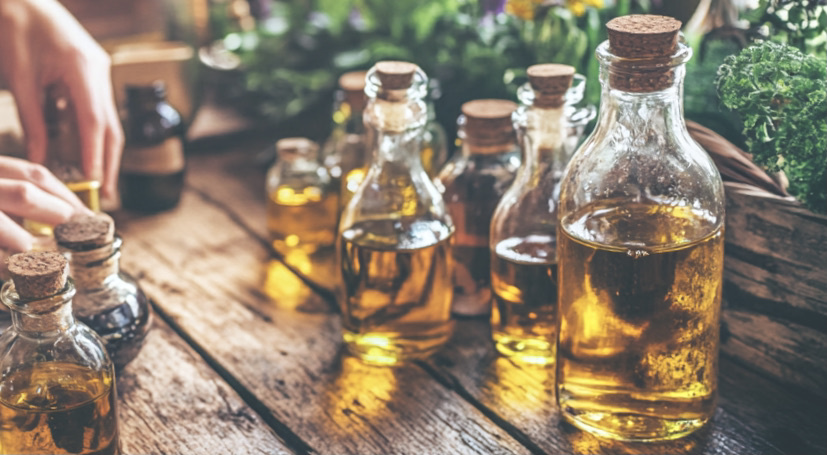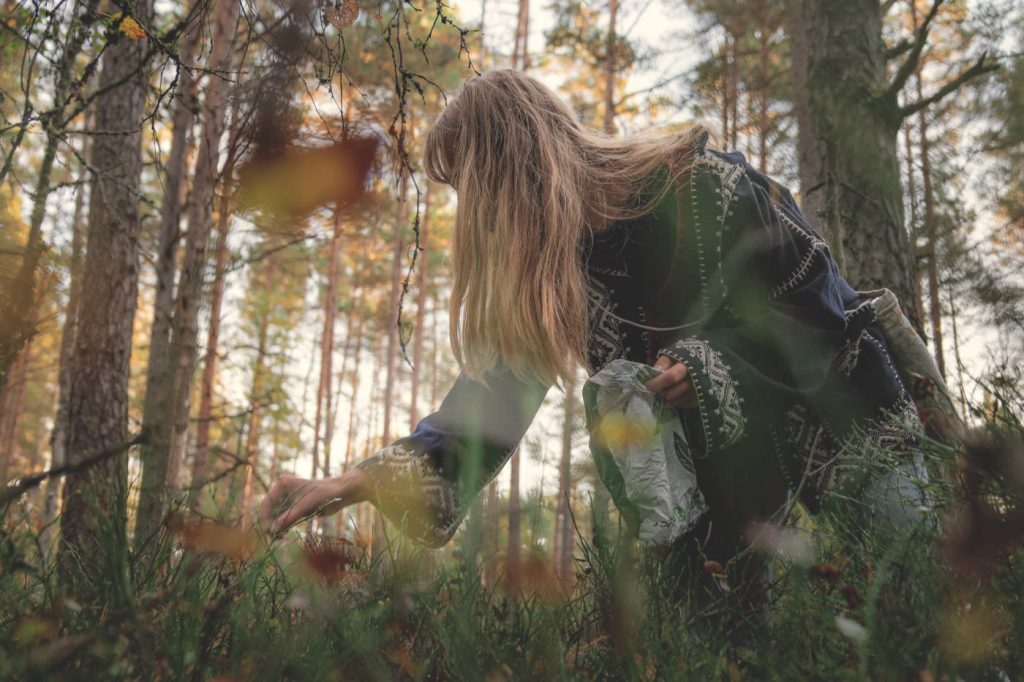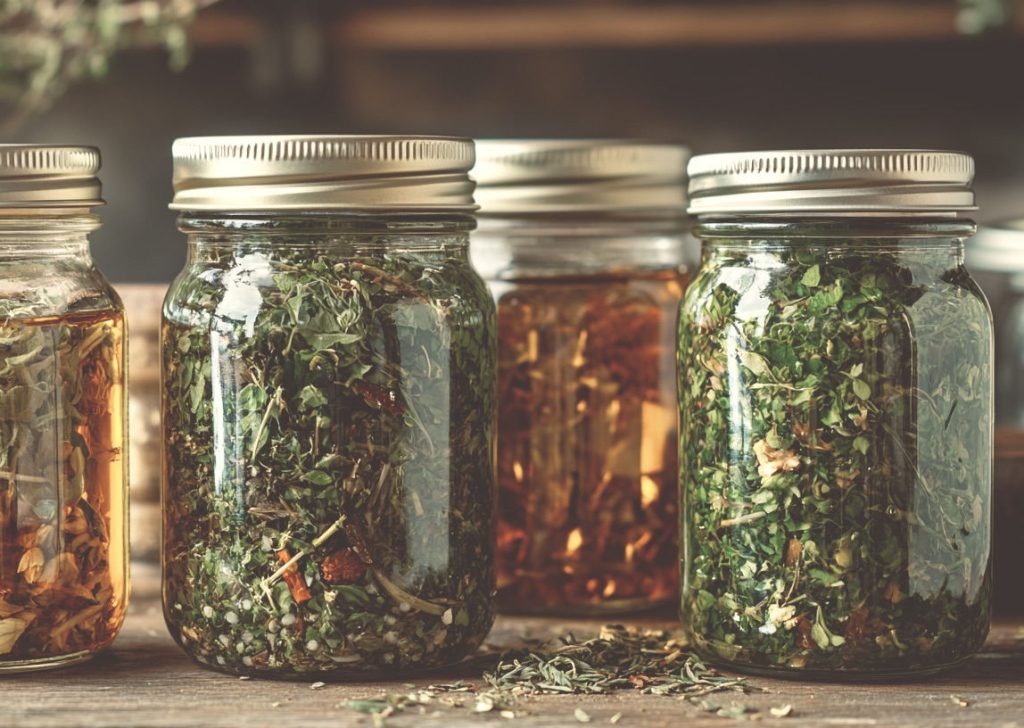Nettles popping up in spring are bursting with energy, minerals and vitamins, providing nourishment, tone and strength. They show up everywhere around us as a reminder of fierceness and vitality as well as gentleness and nourishment with their stinging leaves yet inviting and harmonising deep green and purple colour. They are one of our most abundant and well-defined plants, readily available for everyone to enjoy, serving as a highly nutritious food and a profound nurturer. It makes so much sense why nature is gifting us this plant after a long winter. A plant well worth returning to again and again, year after year.
Passage between Worlds
Stinging nettles are in folklore believed to have represented a bridge between the realms of life and death and the physical and magical world. As a passage between worlds, it was seen as a plant that could guide souls, protect the living, and assist the dead in their journey.
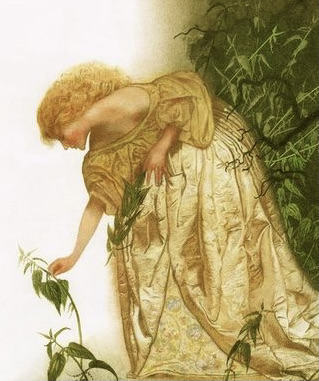
“Picking Nettles by Moonlight” by Nadezhda Illarionova
For our northern ancestors, the early emergence in spring carried deep significance, marking the transition from the “death” of winter to the renewal of life: Spring. After long winters, when food stores were depleted and people grew weak from malnutrition, nettle became a vital source of nourishment. Rich in vitamins and minerals, it will have helped restore strength and vitality, earning its place as a plant of revival, a gift from the earth to bring people back to life after the hardships of winter.
In addition to providing nourishment, people looked to nettle’s strong and soft fiber for making ropes, nets and cloths. As medicine, it was well-known as a springtime tonic and blood cleanser to, as mentioned, rebuild health and strength after long, cruel winters. Nettles were also considered a cure-all for complaints including gout, arthritis, urinary tract and kidney problems, high blood pressure, heart issues, poor lactation, menstrual problems, male infertility, anemia, eczema, baldness, flus, congestion, and allergies.
Through the ages, nettles have been used in most cultures to bring luck and provide protection. Ancient Irish folks believed the nettles protected the elves and acted as a protector against evil sorcery. In Nordic beliefs, nettles were a plant holy to the Norse god Thor and thus would protect one from lightning. Hence, nettles were carried whilst travelling during storms. Furthermore, in Norse cosmology, nettles were associated with the “realm of fire” (Muspeillhem), believed to have given birth to the sun and the stars, initiating the emergence of life. The burning sensation of a nettle sting and its ability to harm (sting) yet heal and nourish – the connection between fire and nettle could come from several angles.

The nourisher of nourishment
Being among the first plants to awaken in spring, nettles pop up bursting with energy, minerals and vitamins, ready to provide nourishment, tone and strength to our winter-weary bodies. Rich in calcium, iron, silica, sulphur, protein and vitamins A, K, and C, stinging nettle makes one of our most nutrient-dense plant friends, serving both as a fine food, medicine and overall powerful plant. Anything from roots to seeds, even the stings of nettles, is used for health and healing. However, in this post, I focus mainly on the uses of nettle leaves.
Enliven the depleted
For those feeling run down, fatigued, or nutritionally depleted, nettle serves as a restorative tonic. Its deep mineral content helps rebuild strength, supporting energy levels and overall resilience while still being gentle to the body. Traditionally used as a blood builder, nettle’s iron and vitamin C content work synergistically to enhance absorption, making it especially beneficial for those prone to anemia or low energy. Additionally, its rich chlorophyll content mirrors hemoglobin, supporting oxygen transport in the body and enhancing vitality. When consumed regularly for longer periods, nettles work as gentle detoxifiers and will clear up dark circles under the eyes, improve skin problems, and give a general healthy boost of shimmering glow to your aura. That alone will bring good vibes back for many. Whether consumed as a tea, added to meals, or taken as a tincture or capsules, when consumed over an extended period, nettle provides essential nourishment for recovery and renewal.
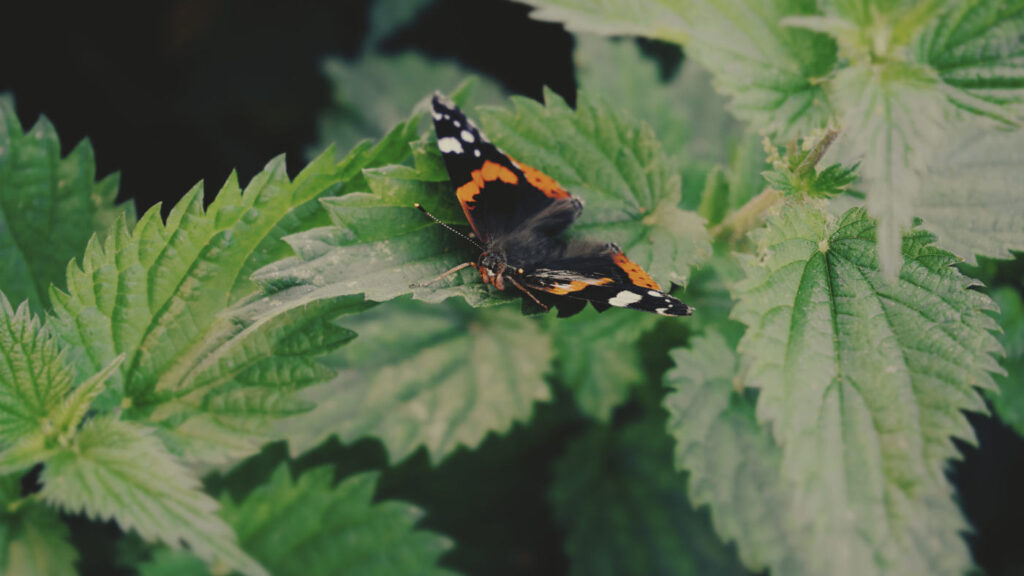
In support of Women
As a general women’s tonic, nettle supports the female reproductive system through all of its many phases, from the first moon cycle to the last and beyond. Its high iron content makes it valuable for menstruating individuals, helping to replenish blood and reduce fatigue. It is known to correct symptoms of PMS and can, because of its vitamin K content, help balance excessive bleeding. During pregnancy, nettle provides essential nutrients for both mother and baby, supporting healthy foetal development and maternal strength. Some women experience high blood pressure when expecting. Nettle helps blood flow more easily through the blood vessels, lowering the pressure. I can’t think of a more nourishing and safe plant to take support from during this precious time. Postpartum, it aids in recovery, fortifies breast milk, and restores mineral stores. As women transition into menopause, nettle continues to provide support by strengthening bones with its rich calcium and silica content while also promoting hair and skin health. Nettle may also provide a gentle preventative to urinary tract infections due to its mild diuretic, cleansing, and mineral-rich properties. As a true nourishing tonic, nettle aligns amazingly with the cycles of a woman’s body, a support throughout her whole life.
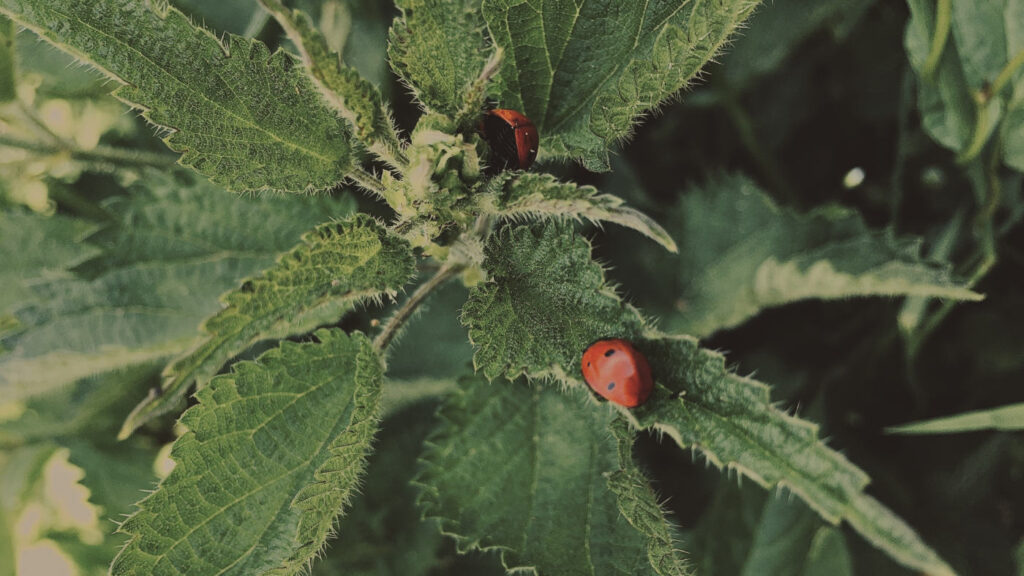
Men’s health
Yes, Nettles are in support of men, too! The roots are among the most well-known wild plants for increasing and sustaining testosterone levels as well as supporting prostate health. Harvest them in early spring, after the last day of frost. They can be powdered and made into capsules or tinctured and supplemented on for up to a month with a week’s break in between. Furthermore, the plant’s seeds are known to be an excellent tonic for the prostate, used both as a curative and a preventative for prostate issues. The seeds are tasty and can be sprinkled onto salads and other dishes. Mind you, the seeds are known to be energising, perhaps you want to avoid them near the hour of your bedtime. The seeds are produced by the female nettle plant in late summer/autumn and are best gathered before turning brown. Before you harvest, make sure you have learned to separate the seed clusters from the flowers, which look somewhat alike but only grow on male nettle plants.
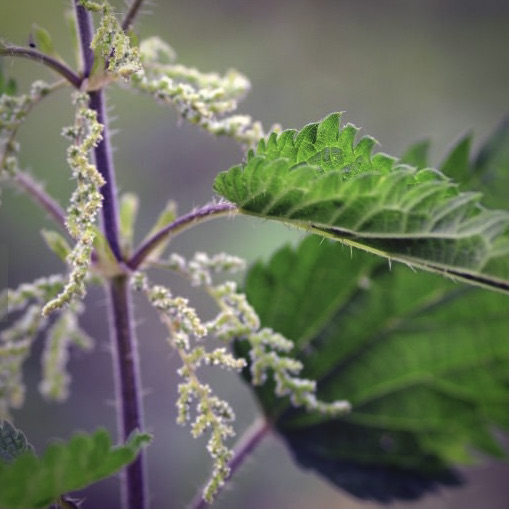
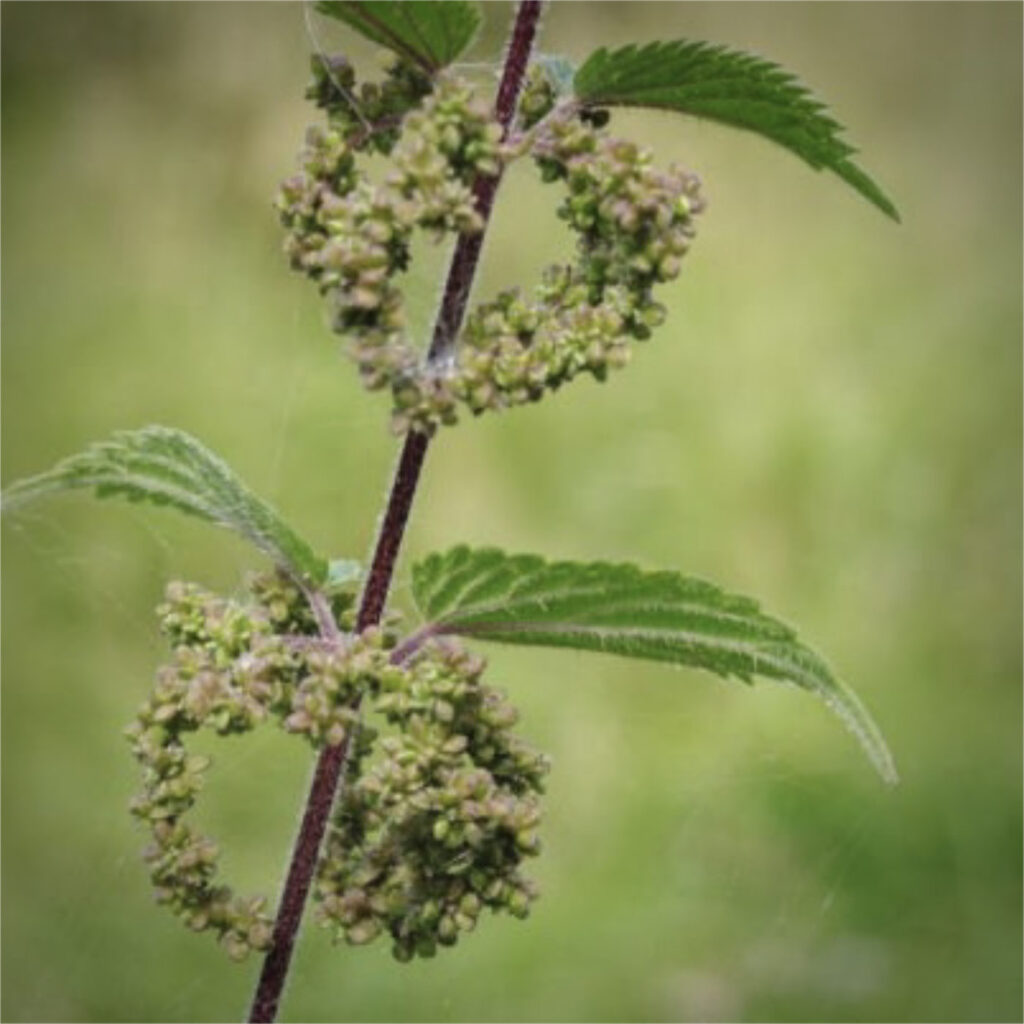
Treating the hay-fevered
Nettle has become a well-known natural antihistamine, making it a powerful herb for easing seasonal allergies. It works by stabilising mast cells in the body, which release histamine in response to allergens, thus reducing symptoms like sneezing, congestion, and itchy eyes. Its anti-inflammatory properties may furthermore help calm the respiratory system and support overall immune function. The discovery was first made using freeze-dried nettle capsules, which relieved symptoms of allergies and hay-fever significantly in many people participating in clinical studies. It is nowadays often recommended to drink nettle tea regularly in the weeks leading up to allergy season to help build resistance while taking fresh nettle tinctures or capsules for quick relief when symptoms arise.
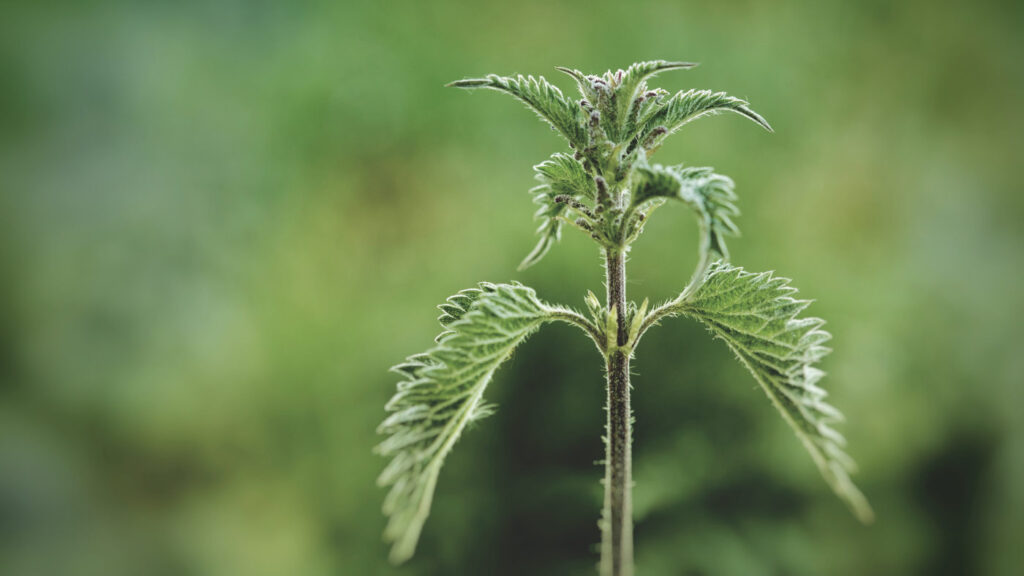
A true superfood
With its exceptional nutrient profile, nettle is truly a superfood, offering nourishment beyond basic nutrition. It surpasses many leafy greens in mineral content and provides a complete protein source, making it especially valuable for plant-based diets. Versatile in the kitchen, nettle can be used in soups, stews, pestos, smoothies and even made into a powder to sprinkle on practically everything. Best of all, it grows in abundance pretty much everywhere, available for everyone to benefit from if approached with care and respect. All parts of the plant are brilliant, but the fresh, purple-green spring leaves are especially rich with vitality. Beyond its physical benefits, nettle carries an energetic and spiritual depth, grounding and strengthening when worked with regularly. Taken as both food and medicine, they invite us to reconnect with nature’s abundant gifts, reminding us that true nourishment is always within reach.
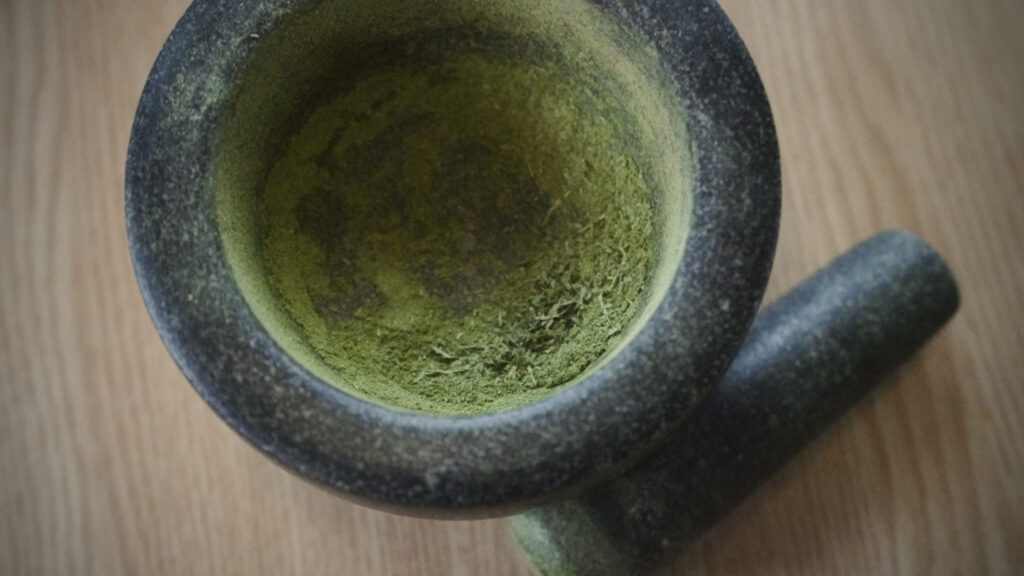
Preparations
Nettles can be added to any food, really, and even eaten fresh in salads after “killing” their sting. This can be done by pinching the leaves with gentle but firm grips along the direction of the stinging hairs on their underside. As a guideline, nettle leaves can be used to replace spinach in pretty much any recipe. I like to add nettle to lasagna, pasta sauces, stews, and quiches or make nettle soup and pesto. I always make sure to have enough dried nettle leaves on hand for teas and to grind into powder for baking. Nettle is very safe to consume as food and as a general tonic. Only when taken medicinally and/or in place of other medication must a physician be advised beforehand. Below are a few creative ways to work with nettle for general nourishment.
Nettle juice
Making juice with spring greens is easy, fun, and super healthy! No expensive and clumsy juicepress is needed – only a blender and a fine sieve. Pick a bunch of fresh nettles (allow any insect to escape) and blend with water and perhaps some lemon juice and honey, apple juice or elder flower cordial – whaterver suits your taste buds. The ratio of ingredients will further determine the intensity and balance of flavours. Enjoy experimenting! Once mixed thoroughly, pour through a sieve, making sure to press all the juice out. Drink fresh!

Nettle vinegar
Infusing nettle in vinegar is a great choice for preserving its nourishing, cleansing and detoxifying properties. Read instructions on how to make a herbal vinegar here, and use your nettle vinegar in salad dressings or a fresh drink by mixing it with honey, lemon and sparkling water. Nettle vinegar makes a brilliant hair rinse for a healthy scalp and shiny hair. With a ratio of about two tablespoons of nettle vinegar to two cups of warm water, I rinse scalp and hair after having shampooed, leave it in for a few minutes and rinse it out. Do this no more often than every fortnight for best results.
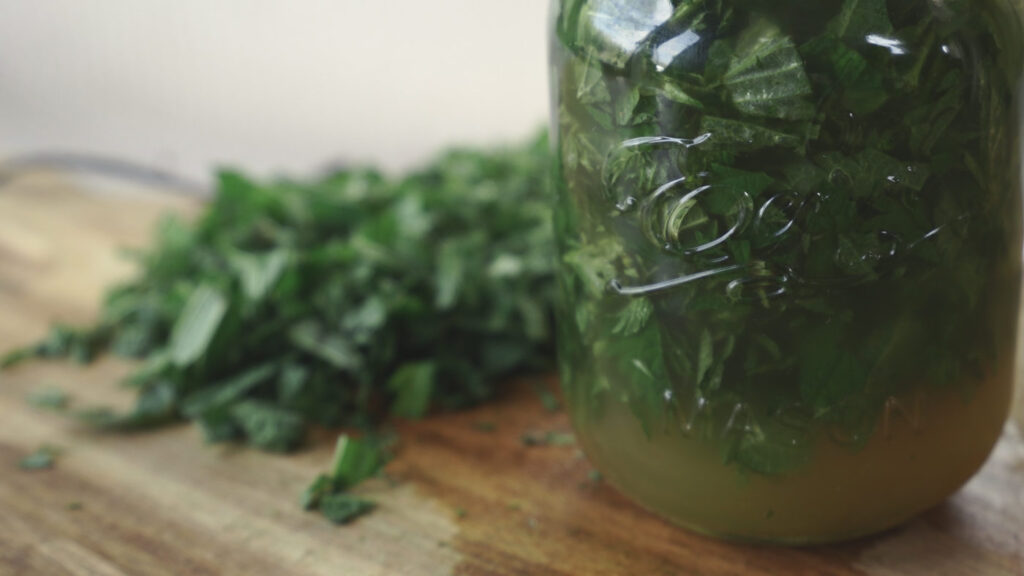
Nettle sweet treats
Nettle can be added to sweet treats and baking for added nourishment! I find this easiest with already dried and powdered nettle, which can be added to any recipe, including bread, sponge cakes, cookies and health bars. Alternatively, one can make a nettle paste by simmering nettle leaves in a small amount of water, straining and squeezing out any excess liquid through a sieve and using a blender to break up the nettles into a paste, which is added to the recipe.
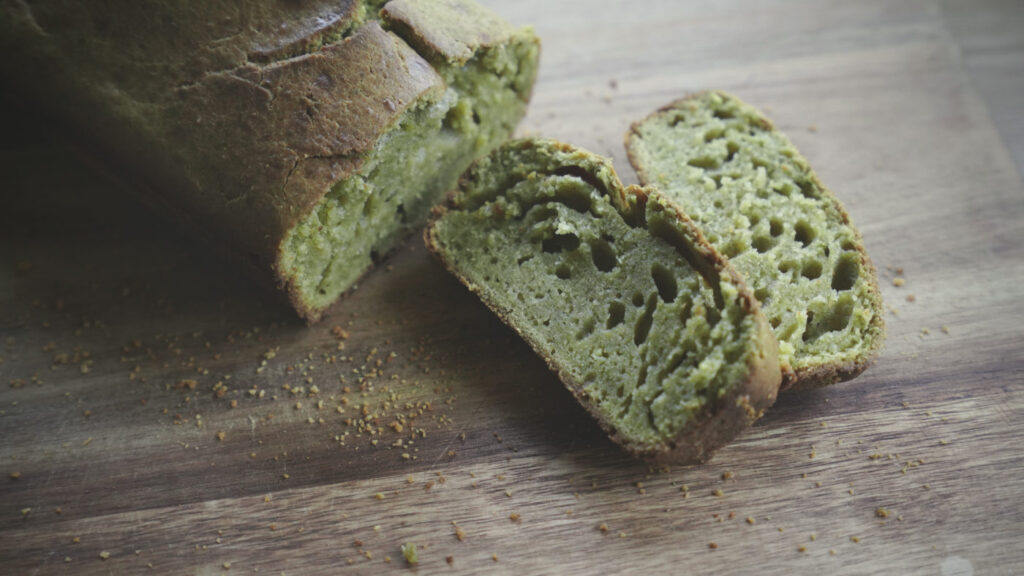
Code of conduct
As always, when wildcrafting and using nature’s resources, harvest with awareness, gratitude, and respect. Nettles grow in abundance, however, one must always leave enough for insects and reproduction. Stinging nettles provide an important source of food for wildlife as well as for us! Caterpillars of butterflies and moths rely on the plants for food, ladybirds lay their eggs on the leaves, bees and other pollinators feed on the nectar from the flowers and some species of bird feed on their seeds. Only harvest plants far enough away from roads and areas prone to fumes and toxins.
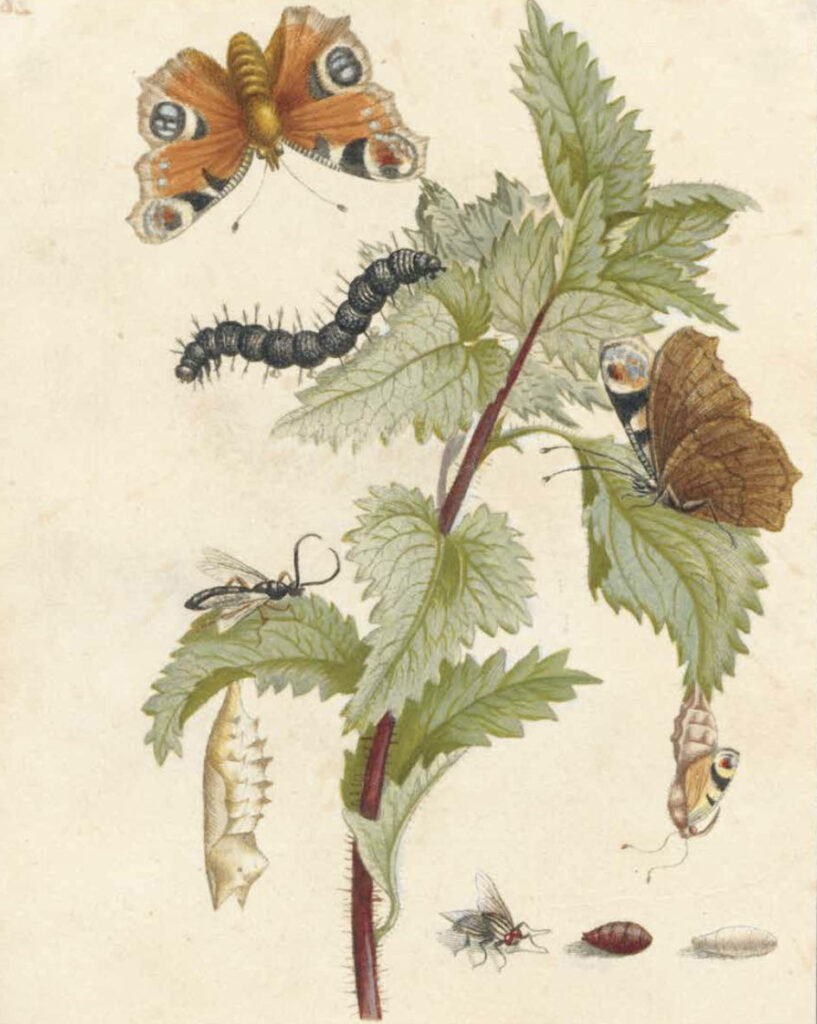
Last thoughts
As we reconnect with ancestral knowledge and observe the nature of things, nettle offers a powerful lesson: that nature provides for us in times of need and that within hardship lies the potential for renewal. Perhaps this way, we understand how to cultivate a deeper relationship with the natural world and its cycles of life, death, and rebirth and even relate them to our human inner cycles.
Love, Sarah Águsta



